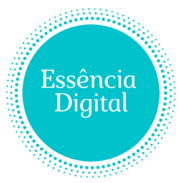In the fast-paced world of freelancing, it’s easy to get caught up in the constant hunt for the next project. Landing new clients feels like a victory, a validation of your skills and marketing efforts. But the true secret to building a stable, profitable, and enjoyable freelance career isn’t just about getting clients—it’s about keeping them.
When clients return for more work, they become the bedrock of your business. You spend less time and energy on prospecting and writing proposals, and more time doing the work you love. A roster of long-term clients provides predictable income, fosters deeper and more efficient collaboration, and transforms satisfied customers into a powerful, passive referral engine. This guide will show you how to move beyond one-off projects and build the kind of strong, lasting client relationships that create a sustainable freelance ecosystem.
Why Long-Term Clients Are a Freelancer’s Greatest Asset
Focusing on client retention isn’t just a “nice to have” strategy; it’s a direct path to a healthier business and a better quality of life. Consider the benefits:
- Financial Stability: Consistent work from repeat clients smooths out the “feast or famine” cycle, providing a predictable income base.
- Increased Efficiency: You already understand their brand, their team, and their workflow. This eliminates the learning curve, allowing you to work faster and more effectively.
- Deeper Collaboration and Trust: With an established relationship, clients trust your judgment more, leading to greater creative freedom and smoother project execution.
- Higher Earning Potential: It’s easier to upsell new services or command higher rates from a client who already knows and values your work.
- Powerful Social Proof: Glowing testimonials and enthusiastic referrals from long-term partners are your most credible marketing tools.
Step 1: Make an Unforgettable First Impression
The foundation for a long-term relationship is laid in your very first interaction. Professionalism, warmth, and organization at this stage signal to the client that you are a reliable partner.
- Respond with Speed and Clarity: When a potential client reaches out, aim to respond within a few business hours. A prompt reply shows you are eager and organized.
- Show Genuine Interest: Your initial messages should be about them, not just you. Ask thoughtful questions about their business and the goals of the project. Use phrases like, “I was interested to learn about your recent product launch…” to show you’ve done your homework.
- Deliver a Polished Proposal: Your proposal is a sample of your work. It should be error-free, well-designed, and clearly articulate how you will solve their specific problem. This is your first chance to demonstrate quality.
Step 2: Master Proactive and Transparent Communication
A lack of communication is the number one reason client relationships fail. The best freelancers don’t wait for the client to ask for an update; they provide it before the client even has to wonder.
- Set Expectations in Writing: After your kickoff call, send a summary email that recaps the project goals, deliverables, timeline, and communication plan. This becomes your shared source of truth.
- Provide Regular, Scheduled Updates: A simple weekly update email can work wonders. Every Friday, send a brief message outlining: 1) What was accomplished this week, 2) The plan for next week, and 3) Any questions you have. This five-minute task builds immense trust.
- Be Radically Honest About Delays: If you are running behind, inform the client as early as possible. Don’t hide the problem. Explain the situation and present a clear plan to get back on track. Clients value honesty far more than flawless execution.
Step 3: Deliver Excellence, Then Add a Little Extra
Consistently delivering high-quality work, on time and on brief, is the price of entry for a long-term relationship. But to become truly indispensable, you need to go beyond the brief.
- Become a Strategic Partner: Don’t just execute tasks; offer insights. If you see a better way to do something or have an idea that could improve their results, share it. Frame it as, “As I was working on this, I had an idea that might help you achieve [goal] even more effectively…”
- The Power of the “Value-Add”: Over-deliver in small, unexpected ways. This could be a bonus social media graphic, a short video tutorial explaining how to use the deliverable, or a list of helpful resources related to their project. These small gestures show you are invested in their success, not just in cashing the invoice.
Step 4: Be Incredibly Easy to Work With
Clients are busy and often juggling multiple priorities. They will gravitate towards freelancers who make their lives easier, not harder. Be the low-friction, reliable partner they can always count on.
- Streamline Your Process: Use professional tools for invoicing (like Wave or FreshBooks), file sharing (like Google Drive or Dropbox), and feedback (like Miro or suggesting comments in a Google Doc).
- Be Flexible and Solution-Oriented: When challenges arise, maintain a calm, positive, and problem-solving attitude. Clients remember freelancers who stay composed under pressure.
- Respect Their Time: Keep meetings concise and focused. Come prepared with a clear agenda and action items.
Step 5: Stay Top-of-Mind After the Project Ends
Don’t let the relationship go cold after the final payment is made. A simple, strategic follow-up plan can lead directly to your next project with them.
- Send a Thank-You and Wrap-Up: A week after the project is complete, send a final thank-you email. Include a link to the live work and mention that you are available for future projects.
- The 60-Day Check-in: Set a calendar reminder to check in about two months later. A simple, no-pressure message like, “Hi [Client Name], I was just thinking about the [project] we worked on and wanted to see how things are going. I hope you’re seeing great results!” keeps you on their radar.
- Share Helpful Content: If you come across an article or a tool that you think would genuinely benefit their business, send it their way. This shows you are still thinking about their success.
Step 6: Make It Easy for Them to Hire You Again
Formalize the ongoing relationship by offering a retainer or a package of services. Present it as a win-win.
- Propose an Ongoing Package: “Since we’ve been working together on monthly blog posts, I’ve put together a package that would offer you a 10% discount compared to the project rate. It would also guarantee my availability for you each month.”
- Benefits for Them: Frame it around their needs: priority access to your schedule, a predictable budget, and no need to write a new contract for every small task.
Final Thoughts: Focus on Partnership, Not Just Projects
The mindset shift from a transactional service provider to a long-term strategic partner is the core of client retention. When you genuinely invest in your client’s success, they will, in turn, invest in yours. Be helpful, be reliable, and be human. That is the simple but powerful formula that turns one-time gigs into a sustainable and rewarding freelance career.
“The foundation of a long-term relationship is providing exceptional service consistently.”

